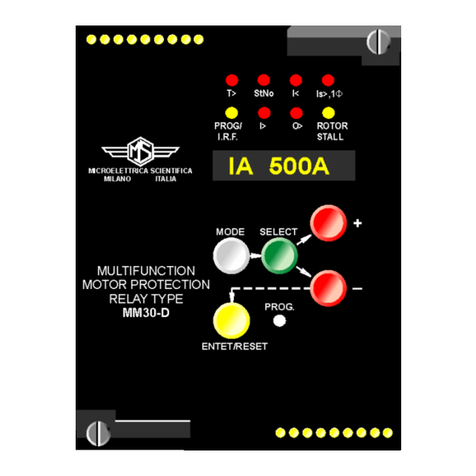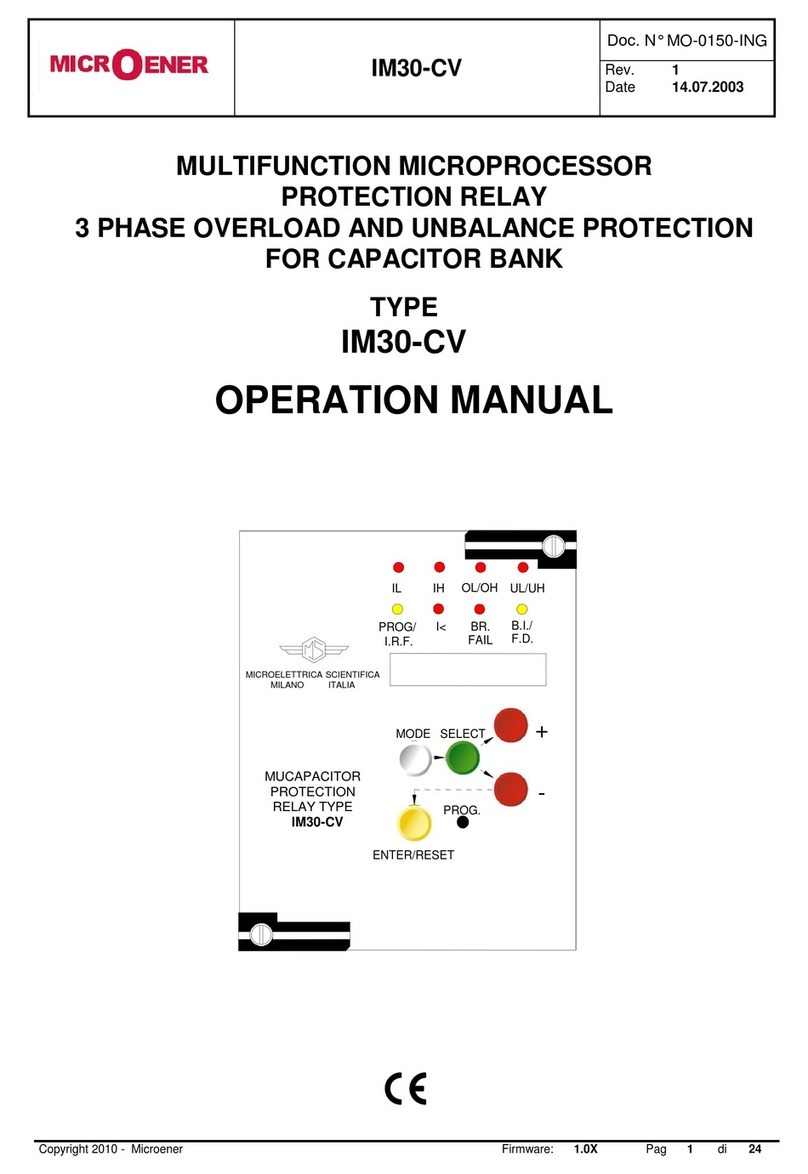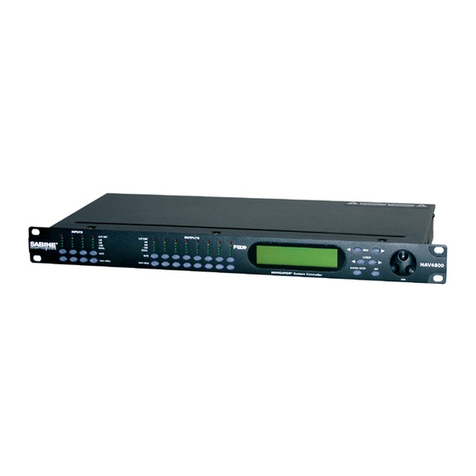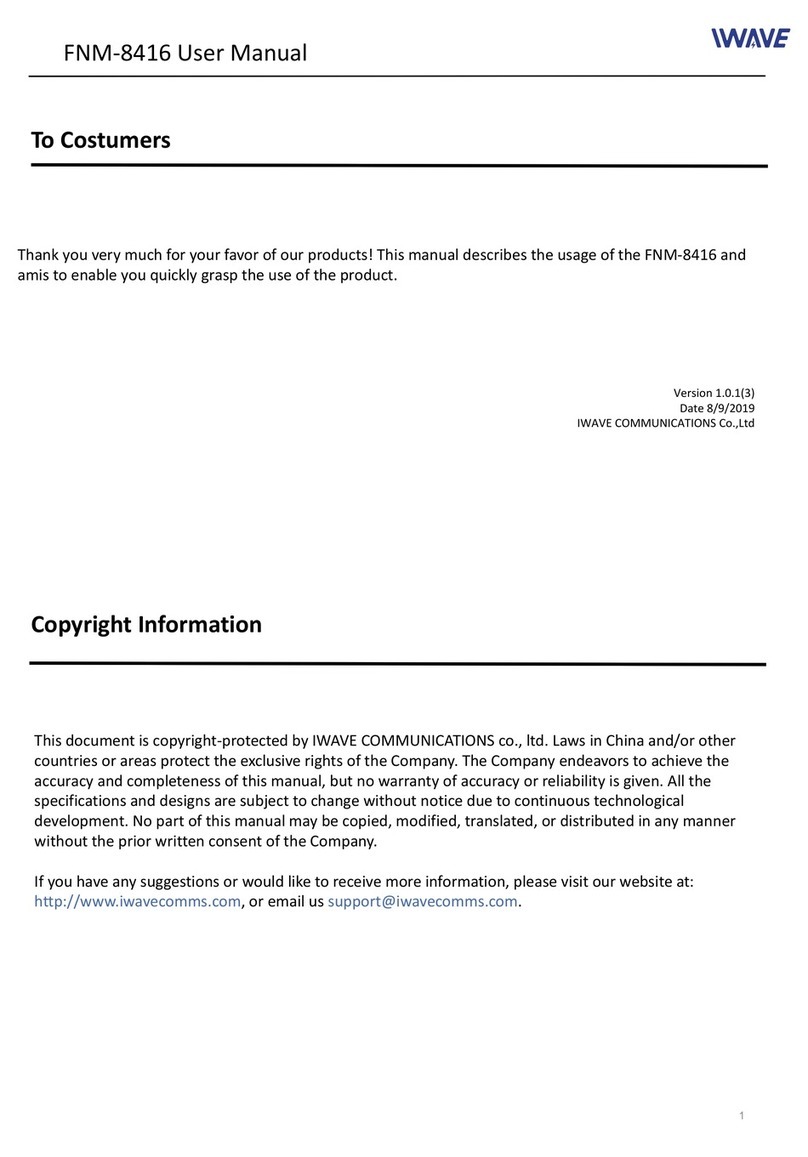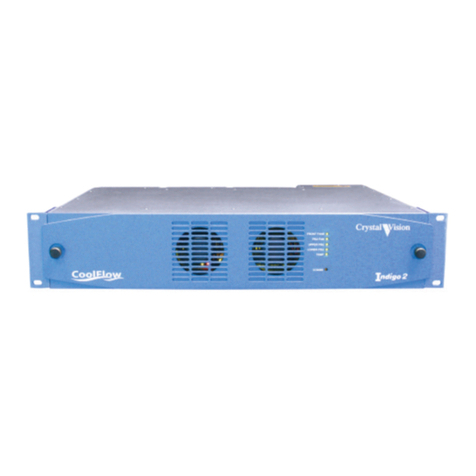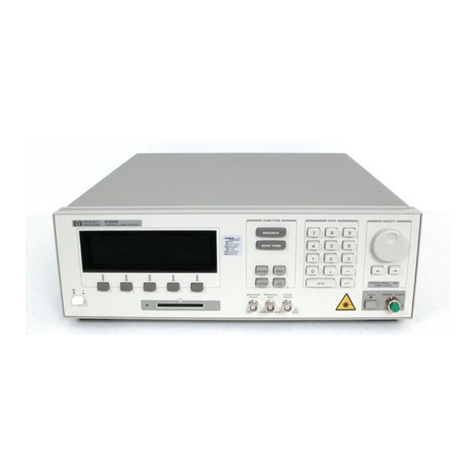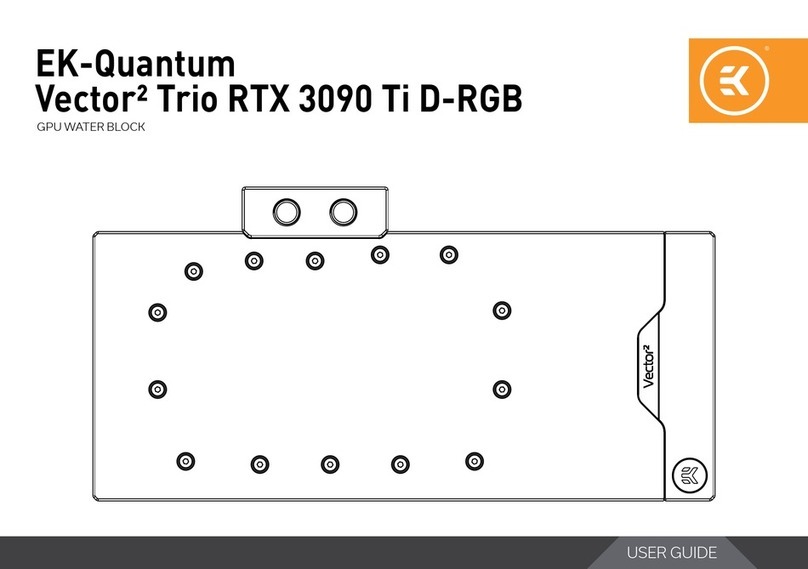MICROENER IM30-BY User manual

IM30-BY
Doc. N° MO-0024-ING
Rev. 1
Date 08.03.2004
Copyright 2010 - Microener
Firmware:
3.0X
Pag
1
of
31
TRIPLE SINGLE PHASE
MICROPROCESSOR OVERCURRENT
AND EARTH FAULT PROTECTION RELAY
TYPE
IM30-BY
3.00
OPERATION MANUAL
MULTIFUNCTION
OVERCURRENT +
EARTH FAULT
RELAY TYPE
IM30-BY
ENTER/RESET
MODE
SELECT
+
-
PROG.
I>>
PROG/
I.R.F
MICROELETTRICA SCIENTIFICA
MILANO ITALY
I>
O>
O>>
BLOCK
INPUT
BR.
FAIL.
FUNC.
DISAB.

IM30-BY
Doc. N° MO-0024-ING
Rev. 1
Date 08.03.2004
Copyright 2010 - Microener
Firmware:
3.0X
Pag
2
of
31
INDEX
1 General utilization and commissioning directions _____________________________________________________ 3
1.1 Storage and transportation_____________________________________________________________________ 3
1.2 Installation__________________________________________________________________________________ 3
1.3 Electrical connection__________________________________________________________________________ 3
1.4 Measuring inputs and power supply______________________________________________________________ 3
1.5 Outputs loading______________________________________________________________________________ 3
1.6 Protection earthing___________________________________________________________________________ 3
1.7 Setting and calibration_________________________________________________________________________3
1.8 Safety protection_____________________________________________________________________________ 3
1.9 Handling___________________________________________________________________________________ 3
1.10 Maintenance________________________________________________________________________________ 4
1.11 Fault detection and repair______________________________________________________________________ 4
2 General characteristics and operation_______________________________________________________________ 4
2.1 Power supply________________________________________________________________________________4
2.2 Operation and Algorithms______________________________________________________________________ 5
2.2.1 Input Quantities__________________________________________________________________________5
2.2.2 1F50/51 –First Overcurrent element_________________________________________________________ 6
2.2.3 2F50/51 –Second Overcurrent element_______________________________________________________7
2.2.4 3F50/51 –Third Overcurrent element_________________________________________________________7
2.2.5 1F50N/51N –First Earth Fault element_______________________________________________________ 8
2.2.6 2F50N/51N –Second Earth Fault element_____________________________________________________9
2.2.7 Breaker Failure__________________________________________________________________________ 9
2.2.8 Algorithm of the time current curves__________________________________________________________ 10
2.3 Clock and Calendar___________________________________________________________________________11
2.3.1 Clock synchronization_____________________________________________________________________ 11
2.3.2 Date and time setting_____________________________________________________________________ 11
2.3.3 Time resolution__________________________________________________________________________ 11
2.3.4 Operation during power off_________________________________________________________________ 11
2.3.5 Time tolerance__________________________________________________________________________ 11
3 Controls and measurements_______________________________________________________________________ 12
4 Signalization_____________________________________________________________________________________13
5 Output relays____________________________________________________________________________________ 14
6 Serial communication_____________________________________________________________________________ 14
7 Digital inputs____________________________________________________________________________________ 15
8 Test____________________________________________________________________________________________ 15
9 Keyboard and display operation____________________________________________________________________ 16
10 Reading of measurements and recorded parameters___________________________________________________ 17
10.1 ACT. MEAS (Actual measure)_____________________________________________________________ 17
10.2 MAX VAL (Max values)_________________________________________________________________ 17
10.3 LASTTRIP (Last trip)____________________________________________________________________18
10.4 TRIP NUM (Trip number)_________________________________________________________________18
11 Reading of programmed settings and relay’s configuration______________________________________________18
12 Programming____________________________________________________________________________________ 19
12.1 Programming of functions settings__________________________________________________________ 19
12.2 Programming the configuration of output relay________________________________________________ 21
13 Manual and automatic test operation________________________________________________________________ 22
13.1 Mode “ TESTPROG “ subprogram “ W/O TRIP “_______________________________________________ 22
13.2 Mode “ TESTPROG “ subprogram “ With TRIP “_______________________________________________ 22
14 Maintenance_____________________________________________________________________________________ 22
15 Power frequency insulation test_____________________________________________________________________22
16 Electrical characteristics___________________________________________________________________________23
17 Connection diagram (Standard Output)_______________________________________________________________ 24
17.1 Connection Diagram (Double Output)___________________________________________________________ 24
18 Wiring the serial communication bus________________________________________________________________ 25
19 Change phase rated input 1A or 5A__________________________________________________________________ 25
20 Time current curves IEC___________________________________________________________________________ 26
21 Time current curves IEEE__________________________________________________________________________ 27
22 Direction for pcb’s draw-out and plug-in_____________________________________________________________ 28
22.1 Draw-out______________________________________________________________________________ 28
22.2 Plug-in_______________________________________________________________________________ 28
23 Overall dimensions_______________________________________________________________________________ 29
24 Keyboard operational diagram______________________________________________________________________ 30
25 Setting’s form____________________________________________________________________________________31

IM30-BY
Doc. N° MO-0024-ING
Rev. 1
Date 08.03.2004
Copyright 2010 - Microener
Firmware:
3.0X
Pag
3
of
31
1. General utilization and commissioning directions
Always make reference to the specific description of the product and to the Manufacturer's instruction.
Carefully observe the following warnings.
1.1 - STORAGE AND TRANSPORTATION,
must comply with the environmental conditions stated on the product's instruction or by the applicable
IEC standards.
1.2 - INSTALLATION,
must be properly made and in compliance with the operational ambient conditions stated by the
Manufacturer.
1.3 - ELECTRICAL CONNECTION,
must be made strictly according to the wiring diagram supplied with the Product, to its electrical
characteristics and in compliance with the applicable standards particularly with reference to human
safety.
1.4 - MEASURING INPUTS AND POWER SUPPLY,
carefully check that the value of input quantities and power supply voltage are proper and within the
permissible variation limits.
1.5 - OUTPUTS LOADING,
must be compatible with their declared performance.
1.6 - PROTECTION EARTHING
When earthing is required, carefully check its effectiveness.
1.7 - SETTING AND CALIBRATION
Carefully check the proper setting of the different functions according to the configuration of the
protected system, the safety regulations and the co-ordination with other equipment.
1.8 - SAFETY PROTECTION
Carefully check that all safety means are correctly mounted, apply proper seals where required and
periodically check their integrity.
1.9 - HANDLING
Notwithstanding the highest practicable protection means used in designing M.S. electronic circuits,
the electronic components and semiconductor devices mounted on the modules can be seriously
damaged by electrostatic voltage discharge which can be experienced when handling the modules.
The damage caused by electrostatic discharge may not be immediately apparent but the design
reliability and the long life of the product will have been reduced. The electronic circuits reduced by
M.S. are completely safe from electrostatic discharge (8 KV IEC 255.22.2) when housed in their
case; withdrawing the modules without proper cautions expose them to the risk of damage.

IM30-BY
Doc. N° MO-0024-ING
Rev. 1
Date 08.03.2004
Copyright 2010 - Microener
Firmware:
3.0X
Pag
4
of
31
a. Before removing a module, ensure that you are at the same electrostatic potential
as the equipment by touching the case.
b. Handle the module by its front-plate, frame, or edges of the printed circuit board.
Avoid touching the electronic components, printed circuit tracks or connectors.
c. Do not pass the module to any person without first ensuring that you are both at
the same electrostatic potential. Shaking hands achieves equipotential.
d. Place the module on an antistatic surface, or on a conducting surface which is at
the same potential as yourself.
e. Store or transport the module in a conductive bag.
More information on safe working procedures for all electronic equipment can be found
in BS5783 and IEC 147-OF.
1.10 - MAINTENANCE
Make reference to the instruction manual of the Manufacturer ; maintenance must be
carried-out by specially trained people and in strict conformity with the safety regulations.
1.11 - FAULT DETECTION AND REPAIR
Internal calibrations and components should not be altered or replaced.
For repair please ask the Manufacturer or its authorised Dealers.
Misapplication of the above warnings and instruction relieves the Manufacturer of any liability.
2. GENERAL
Input currents are supplied to 4 current transformers: - three measuring phase current - one measuring
the earth fault zero-sequence current.
Phase current input can be 1 or 5A
For zero-sequence current, taps for 1A and 5A input are provided on relay’s terminal board dimension
drawings.
Make electric connection in conformity with the diagram reported on relay's enclosure.
Check that input currents are same as reported on the diagram and on the test certificate.
The auxiliary power is supplied by a built-in interchangeable module fully isolated an self protected.
2.1 - POWER SUPPLY
The relay can be fitted with two different types of power supply module :
24V(-20%) / 110V(+15%) c.a.
80V(-20%) / 220V(+15%) c.a.
a)
-
b)
-
24V(-20%) / 125V(+20%) c.c.
90V(-20%) / 250V(+20%) c.c.
Before energising the unit check that supply voltage is within the allowed limits.

IM30-BY
Doc. N° MO-0024-ING
Rev. 1
Date 08.03.2004
Copyright 2010 - Microener
Firmware:
3.0X
Pag
5
of
31
2.2 –Operation and Algorithms
2.2.1 –Input Quantities
System Frequency
The system frequency Fn can be set to 50 or 60 Hz
Current inputs (See Connection Diagram § 17)
The relay directly displays the r.m.s. value of Phase Currents “ IA, IB, IC “ flowing in the Primary of
the input Current Transformers and refers all its measurements to that value.
To make the relay properly working with any C.T., when programming the relay settings we have to
load the value of the Rated Primary Current ” In “ of the phase CTs:
In = (1-9999)A, adjustable in steps of 1A.
Similarly for the Residual (Zero Sequence) Current, we have to load the value of the Rated Primary
Current On=(1-9999)A, adjustable in steps of 1A.
If the input of the Earth Fault element is supplied by the Residual connection of the 3 phase CTs, the
same value as “ In “ shall be set for “ On “.
If the input of the Earth Fault element is supplied by a separated Core Balance CT, or by another
CT, “ On “ set will be the Rated Primary Current of this CT, normally different from “ In “.
The Rated Secondary Current of the CTs, can be either 1A of 5A.
For the Phase Current inputs, 1A or 5A configuration can be selected by moving the jumpers
provided on the CT input card (see § 19).
For the Earth Fault Current input, 1A or 5A taps are provided on relay terminals board : 1A or 5A
configuration is obtained by connecting the Residual Current inputs respectively to terminal 32-33 or
32-31 (see Connection Diagram § 17).
Example :
Phase CTs 1500/5A and Core Balance CT 100/1A
Load In = 1500A and On = 100A
Configure CT input card with jumpers J1, J2, J3 in the 5A position.
Connect Earth Fault input to terminals 32-33

IM30-BY
Doc. N° MO-0024-ING
Rev. 1
Date 08.03.2004
Copyright 2010 - Microener
Firmware:
3.0X
Pag
6
of
31
2.2.2 –1F50/51 –First Overcurrent element
Operation mode : F(1I) = D, A, B, C, MI, SI, VI, EI
The time-current operation characteristics of this element can be
- Independent definite time : F(1I) = D
- Inverse time according to different time-current curves (see § 2.2.9)
Operation level : 1I = (0.25-4)In, adjustable in steps of 0.01In.
The value set for the variable 1I is the minimum r.m.s. value of the current flowing in at least one of
the 3 phase currents “ IA, IB, IC “ which makes the element start functioning.
Trip time delay : t1I = (0.05-30)s, adjustable in steps of 0.01s.
As soon as the current of any phase (IA, IB, IC), exceeds the set value [1I] the element starts to
operate:
- The led “ I> “ starts flashing.
- The timer ” t1I “ starts counting down
- Any output relay programmed to be operated by the instantaneous element “1I” (see § 12.2)
gets energized and picks-up operating its contacts accordingly.
If during “ t1I “ count down, the current in all the 3-phases drops below 0.95 [1I] the element and the
timer are reset.
In the Independent Definite Time mode ” F(1I) = D “ at the end of the set time [t1I] - if the current
remained continuously above the reset level 0.95 [1I] –the element trips:
- The led “ I> “ is steadily illuminated.
- Any output relay programmed to be operated by the time delayed element “ t1I “ (see § 12.2)
gets energized and picks-up operating its contacts accordingly.
In the Inverse time operation modes, the Trip Time delay is that resulting from the equations of the
selected Time-Current-curve (see § 2.2.9).
Reset of the Led is operated by pressing the yellow Reset push button on relays front face or via
Serial Port (see MSCom operation). Reset of the output relay takes place as explained in § 5.
Any time the time delayed element trips, the Event Recording “ Last Trip “ is activated
(See § 10.3) and the trip counter “ TRIP NUM “ is increased (See § 10.4).

IM30-BY
Doc. N° MO-0024-ING
Rev. 1
Date 08.03.2004
Copyright 2010 - Microener
Firmware:
3.0X
Pag
7
of
31
2.2.3 –2F50/51 –Second Overcurrent element
The time-current operation characteristics of this element is Independent Definite Time
Operation level : 2I = (0.5-40)In, adjustable in steps of 0.1In.
The value set for the variable “ 2I “ is the minimum r.m.s. value of the current flowing in at least one
of the 3 phase currents “ IA, IB, IC “ which makes the element start functioning.
The set value [2I] of the operation level can be automatically doubled during inrush transients if the
variable [2Ix2] is set to ON (See § 12).
Trip time delay : t2I = (0.05-3)s, adjustable in steps of 0.01s.
As soon as the current of any phase (IA, IB, IC), exceeds the set value [2I] the element starts to
operate:
- The led “ I>> “ starts flashing.
- The timer ” t2I “ starts counting down
- Any output relay programmed to be operated by the instantaneous element “2I“ (see § 12.2)
gets energized and picks-up operating its contacts accordingly.
If during “ t2I “ count down, the current in all the 3-phases drops below 0.95 [2I] the element and the
timer are reset.
At the end of the set time [t2I] - if the current remained continuously above the reset level 0.95 [2I] –
the element trips:
- The led “I>>“ is steadily illuminated.
- Any output relay programmed to be operated by the time delayed element “ t2I “ (see § 12.2)
gets energized and picks-up operating its contacts accordingly.
In the Inverse time operation modes, the Trip Time delay is that resulting from the equations of the
selected Time-Current-curve (see § 2.2.9).
Reset of the Led is operated by pressing the yellow Reset push button on relays front face or via
Serial Port (see MSCom operation). Reset of the output relay takes place as explained in § 5.
Any time the time delayed element trips, the Event Recording “ Last Trip “ is activated
(See § 10.3) and the trip counter “ TRIP NUM “ is increased (See § 10.4).
2.2.4 –3F50/51 –Third Overcurrent element
- Instantaneous operation level : 3I = (0.5-40)In adjustable in steps 0.1In.
It trips instantaneously as soon as the current exceeds the set level [3I], operates programmed output
relays and the led ” I>> “ - Reset takes place at 0.95 [3I].

IM30-BY
Doc. N° MO-0024-ING
Rev. 1
Date 08.03.2004
Copyright 2010 - Microener
Firmware:
3.0X
Pag
8
of
31
2.2.5 –1F50N/51N –First Earth Fault element
Operation mode : F(1O) = D, A, B, C, MI, SI, VI, EI
The time-current operation characteristics of this element can be
- Independent definite time : F(1O) = D
- Inverse time according to different time-current curves (see § 2.2.9)
Operation level : 1O = (0.02-0.4)On, adjustable in steps of 0.01On.
The value set for the variable “ 1O “ is the minimum r.m.s. value of the Residual Current (3Io) flowing
which makes the element start functioning.
Trip time delay : t1O = (0.05-30)s, adjustable in steps of 0.01s.
As soon as the Residual Current exceeds the set value [1O] the element starts to operate:
- The led ” O> “ starts flashing.
- The timer” t1O “ starts counting down
- Any output relay programmed to be operated by the instantaneous element “1O“ (see § 12.2)
gets energized and picks-up operating its contacts accordingly.
If during “t1O“ count down, the Residual Current drops below 0.95 [1O] the element and the timer are
reset.
In the Independent Definite Time mode “ F(1O) = D “ at the end of the set time [t1O] - if the current
remained continuously above the reset level 0.95 [1O] –the element trips:
- The led ” O> “ is steadily illuminated.
- Any output relay programmed to be operated by the time delayed element “t1O“ (see § 12.2)
gets energized and picks-up operating its contacts accordingly.
In the Inverse time operation modes, the Trip Time delay is that resulting from the equations of the
selected Time-Current-curve (see § 2.2.9).
Reset of the Led is operated by pressing the yellow Reset push button on relays front face or via
Serial Port (see MSCom operation). Reset of the output relay takes place as explained in § 5.
Any time the time delayed element trips, the Event Recording “ Last Trip “ is activated
(See § 10.3) and the trip counter “ TRIP NUM “ is increased (See § 10.4).

IM30-BY
Doc. N° MO-0024-ING
Rev. 1
Date 08.03.2004
Copyright 2010 - Microener
Firmware:
3.0X
Pag
9
of
31
2.2.6 –2F50N/51N –Second Earth Fault element
The time-current operation characteristics of this is Independent Definite Time
Operation level : 2O = (0.02-4)On, adjustable in steps of 0.01On.
The value set for the variable “2O“ is the minimum r.m.s. value of the Residual Current (3Io) flowing
which makes the element start functioning.
Trip time delay : t2O = (0.05-3)s, adjustable in steps of 0.01s.
As soon as the Residual Current exceeds the set value [2O] the element starts to operate:
- The led “ O>> “ starts flashing.
- The timer ” t2O “ starts counting down
- Any output relay programmed to be operated by the instantaneous element “2O“ (see § 12.2)
gets energized and picks-up operating its contacts accordingly.
If during “t2O“ count down, the Residual Current drops below 0.95 [2O] the element and the timer are
reset.
At the end of the set time [t2O] - if the current remained continuously above the reset level 0.95 [2O]
–the element trips:
- The led “ O>> “ is steadily illuminated.
- Any output relay programmed to be operated by the time delayed element “t2O” (see § 12.2)
gets energized and picks-up operating its contacts accordingly.
In the Inverse time operation modes, the Trip Time delay is that resulting from the equations of the
selected Time-Current-curve (see § 2.2.9).
Reset of the Led is operated by pressing the yellow Reset push button on relays front face or via
Serial Port (see MSCom operation). Reset of the output relay takes place as explained in § 5.
Any time the time delayed element trips, the Event Recording “ Last Trip “ is activated
(See § 10.3) and the trip counter “ TRIP NUM “ is increased (See § 10.4).
2.2.7 –Breaker Failure
As soon as any of the output Relays R2, R3, R4 controlled by the phase overcurrent elements trips,
the time “tBF” is started; if at the and of the delay “tBF” the current flowing in any of the phase
elements has not drop down to zero, the Led “BR. FAIL.” is lit-on and the Relay “R1” is energized if
so programmed (R1 = BF see § 12.2).

IM30-BY
Doc. N° MO-0024-ING
Rev. 1
Date 08.03.2004
Copyright 2010 - Microener
Firmware:
3.0X
Pag
10
of
31
rs
atTKB
1
Is
I
A
t(I)
2.2.8 - ALGORITHM OF THE TIME CURRENT CURVES
The Time Current Curves are generally calculated with the following equation :
(1) where :
t(I) = Actual trip time delay when the input current equals I
Is = Set minimum pick-up level
K =
Ts= Set time delay : t(I) = Tswhen
tr = Operation time of the output relay on pick-up.
The parameters A, B and a have different values for the different Time Current Curves.
Curve Name
Curve Identifier
A
B
a
IEC A Inverse
A
0.14
0
0.02
IEC B Very Inverse
B
13.5
0
1
IEC C Extremely Inverse
C
80
0
2
IEEE Moderate Inverse
MI
0.0104
0.0226
0.02
IEEE Short Inverse
SI
0.00342
0.00262
0.02
IEEE Very Inverse
VI
3.88
0.0963
2
IEEE Inverse
I
5.95
0.18
2
IEEE Extremely Inverse
EI
5.67
0.0352
2
For the IEC curves, being B = 0, the Time/Current equation (1), becomes:
Where Kt = (10a-1)Ts is the time multiplier
1
aB
110A
10
II
s
tr
1
Is
I
Kt
tr
1
Is
I
Ts1-10
1' aa
a

IM30-BY
Doc. N° MO-0024-ING
Rev. 1
Date 08.03.2004
Copyright 2010 - Microener
Firmware:
3.0X
Pag
11
of
31
2.3 - CLOCK AND CALENDAR
The unit features a built in clock calendar with Years, Months, Days, Hours, Minutes, Seconds, Tenths
of seconds and Hundredths of seconds.
2.3.1 - Clock synchronization.
The clock can be synchronized via the serial communication interface.
The following synchronization periods can be set: 5, 10, 15, 30, 60 minutes.
Synchronization can also be disabled, in which case the relay ignores the serial broadcast signal.
In case synchronization is enabled, the unit expects to receive a sync signal at the beginning of every
hour and once every Tsyn minutes. When a sync signal is received, the clock is automatically set to
the nearest expected synchronization time.
For example: if Tsyn is 10min and a sync signal is received at 20:03:10 January the 10th, 98, then the
clock is set to 20:00:00 January the 10th, 1998.
On the other hand, if the same sync signal were received at 20:06:34, the clock would be set to
20:10:00, January the 10th 98.
Note that if a sync signal is received exactly in the middle of a Tsyn period, the clock is set to the
previous expected synchronization time.
2.3.2 - Date and time setting.
When the PROG/SETTINGS menu is entered, the current date is displayed with one of the groups of
digits (YY, MMM or DD) blinking.
The DOWN key operates as a cursor. It moves through the groups of digits in the sequence YY =>
MMM => DD => YY => …
The UP key allows the user to modify the currently blinking group of digits.
If the ENTER button is pressed the currently displayed date is set.
Pressing the SELECT button the current time is displayed which can be modified using the same
procedure as for the date.
If synchronization is enabled and the date (or time) is modified, the clock is stopped until a sync
signal is received via the serial port. This allows the user to manually set many units and have them
to start their clocks in a synchronized fashion.
If synchronization is disabled the clock is never stopped.
Note that the setting of a new time always clears 10ths and 100ths of sec.
2.3.3 - Time resolution.
The clock has a 10ms resolution. This means that any event can be time-stamped with a 10ms
accuracy, although the information concerning 10ths and 100ths of sec. can be accessed only via the
serial communication interface.
2.3.4 - Operation during power off.
The unit has an on board Real Time Clock which maintains time information for at least 1 hour in
case of power supply failure.
2.3.5 - Time tolerance.
During power on, time tolerance depends on the on board crystal (+/-50ppm typ, +/-100ppm max.
over full temperature range).
During power off, time tolerance depends on the RTC’s oscillator (+65 /–270 ppm max over full
temperature range).

IM30-BY
Doc. N° MO-0024-ING
Rev. 1
Date 08.03.2004
Copyright 2010 - Microener
Firmware:
3.0X
Pag
12
of
31
3. CONTROLS AND MEASUREMENTS
Five key buttons allow for local management of all relay's functions.
A 8-digit high brightness alphanumerical display shows the relevant readings (xxxxxxxx)
(see synoptic table fig.1)
FIG.1
ENTER/RESET
MODE
SELECT
+
-
PROG.
The SELECT button chooses
which category of values within the
chosen mode to display
Pressing this button progressively
selects between
Measurements Display,
Setting Display, Programming,
and Test modes
When in Program mode, this
button stores the newly selected
value. If not in Program mode and
the relay has tripped, this button
resets the relay and all output
contacts. If not tripped, this button
restores the default display.
The + and - buttons are used to
select the actual measurement or
display desired when in
Measurements Display or Settings
Display modes. When in Program
mode, these buttons increase or
decrease the value of the
displayed setting.
When in Program mode, and when
all input currents are zero,
pressing this recessed button
places the relay into active
programming mode, allowing any
or all of the relay’s settings to be
altered.

IM30-BY
Doc. N° MO-0024-ING
Rev. 1
Date 08.03.2004
Copyright 2010 - Microener
Firmware:
3.0X
Pag
13
of
31
4. SIGNALIZATIONS
Eight signal leds (normally off) are provided:
a)
Red LED
I>
Flashing when measured current exceeds the set trip level [1I].
Illuminated on trip after expiry of the set trip time delay [t1I].
b)
Red LED
I>>
Same as above related to [2I], [t2I] and [3I].
c)
Red LED
O>
Same as above related to [1O], [t1O].
d)
Red LED
O>>
Same, as above related to [2O], [t2O].
e)
Yellow LED
PROG/
I.R.F.
Flashing during the programming of the parameters or in case of
Internal Relay Fault.
f)
Red LED
BLOCK
INPUT
Flashing when a blocking signal is present at the relevant input
terminals.
g)
Red LED
BR.FAIL.
Lit-on when the BREAKER FAILURE function is activated.(see § 5)
h)
Yellow LED
FUNC.
DISAB.
Lit-on when the operation of one or more of the relay functions has
been disactivated in the programming.
The reset of the leds takes place as follows:
Leds
a,b,c,d,g
:
From flashing to off, automatically when the lit-on cause disappears.
From ON to OFF, by "ENTER/RESET" push button or via serial
communication only if the tripping cause has disappeared.
Leds
e,f,h
:
From ON to OFF, automatically when the lit-on cause disappears.
In case of auxiliary power supply failure the status of the leds is recorded and reproduced when power
supply is restored.

IM30-BY
Doc. N° MO-0024-ING
Rev. 1
Date 08.03.2004
Copyright 2010 - Microener
Firmware:
3.0X
Pag
14
of
31
5. OUTPUT RELAYS
Five output relays are available (R1, R2, R3, R4, R5)
a) - The relays R1,R2,R3,R4 are normally deenergized (energised on trip of the time delayed elements):
R2
:
t1I, t2I, t3I
- Phase A
R3
:
t1I, t2I, t3I
- Phase B
R4
:
t1I, t2I, t3I
- Phase C
R1
:
According to programming as follows:
R1 = tIo
:
1O, 2O (Earth Fault any phase)
R1 = BF
:
Breaker Failure (See § 2.2.7)
b) - The relay R5, normally energized, is not programmable and it is deenergized on:
internal fault
power supply failure
during the programming
6. SERIAL COMMUNICATION
The relays fitted with the serial communication option can be connected via a cable bus a fiber optic bus
for interfacing with a Personal Computer (type IBM or compatible).
All the functionalities that can be operated locally (for example reading of input measurement and
changing of relay’s settings) are also possible via the serial communication interface.
Furthermore the serial port allows the user to read event recording and stored data.
The unit has a RS232 / RS485 interface and can be connected either directly to a P.C. via a dedicated
cable or to a RS485 serial bus, allowing having many relays to exchange data with a single master P.C.
using the same physical serial line. A RS485/232 converter is available on request.
The communication protocol is MODBUS RTU (only functions 3, 4 and 16 are implemented).
Each relay is identified by its programmable address code (NodeAd) and can be called from the P.C.
A dedicated communication software (MSCOM) for Windows 95/98/NT4 SP3 (or later) is available.
Please refer to the MSCOM instruction manual for more information Microelettrica Scientifica.

IM30-BY
Doc. N° MO-0024-ING
Rev. 1
Date 08.03.2004
Copyright 2010 - Microener
Firmware:
3.0X
Pag
15
of
31
7. DIGITAL INPUTS
Three digital inputs are provided: they are active when the relevant terminals are shorted
B2
(terminals 1 - 2)
:
it blocks the operation of the phase overcurrent elements
B3
(terminals 1 - 3)
:
it blocks the operation of the earth fault elements.
B4
(terminals 1 - 14)
:
The relay allows to independently program two complete banks of
setting.
Switching-over from “CONFIG A” to “CONFIG B”
- Terminals 1 –14 Open = “CONFIG A” active
- Terminals 1 –14 Shorted = “CONFIG B” active
The input B4 can also be activated via the serial communication port
(leave 1-14 open).
In this case Switching-back from “CONFIG B” to “CONFIG A” can only
be made via serial port.
Note: if the terminals 1 –14 are shorted, switching-back from “CONFIG
B” to “CONFIG A” cannot be made via the serial port.
1-14
Serial communication
Active Setting
Open
No Set
CONFIG A
Open
Set
CONFIG B
Shorted
No Set
CONFIG B
Shorted
Set
CONFIG B
When a function is blocked the pick-up of its time delayed output is inhibited. Programming allows to
have the inhibition either permanent as long as the blocking input is active (tB2=Dis; tB3=Dis) or
automatically removed after the expiry of the set trip time delay of the function involved plus an
additional time 2tBF (tB2=2tBF; tB3=2tBF). By proper interconnection of the blocking inputs and outputs
of different relays it is possible to configurate very efficient arrangements of logic fault discrimination as
well as to feature a safe and quick breaker back-up protection.
8. TEST
Besides the normal "WATCHDOG" and "POWERFAIL" functions, a comprehensive program of self-test
and self-diagnostic provides:
Diagnostic and functional test, with checking of program routines and memory's content, run every
time the aux. power is switched-on: the display shows the type of relay and its version number.
Dynamic functional test run during normal operation every 15 min. (relay's operation is suspended
for less than 4ms). If any internal fault is detected, the display shows a fault message, the Led
"PROG/IRF" illuminates and the relay R5 is deenergized.
Complete test activated by the keyboard or via the communication bus either with or without tripping
of the output relays.

IM30-BY
Doc. N° MO-0024-ING
Rev. 1
Date 08.03.2004
Copyright 2010 - Microener
Firmware:
3.0X
Pag
16
of
31
9. KEYBOARD AND DISPLAY OPERATION
All controls can be operated from relay's front or via serial communication bus.
The keyboard includes five hand operable buttons (MODE) - (SELECT) - (+) - (-) - (ENTER/RESET)
plus one indirect operable key (PROG) (see synoptic table a fig.1):
a)
-
White key
MODE
:
when operated it enters one of the following operation modes
indicated on the display :
MEASURES
=
Reading of all the parameters measured and of those recorded
in the memory
SET DISP
=
Reading of the settings and of the configuration of the output
relays as programmed.
PROG
=
Access to the programming of the settings and of relay
configuration.
TEST PROG
=
Access to the manual test routines.
b)
-
Green key
SELECT
:
When operated it selects one of the menus available in the
actual operation MODE
c)
-
Red key
“+”AND “-“
:
When operated they allow to scroll the different information
available in the menu entered by the key SELECT
d)
-
Yellow key
ENTER/RESET
:
It allows the validation of the programmed settings
- the actuation of test programs
- the forcing of the default display indication
- the reset of signal Leds.
e)
-
Indirect key
:
Enables access to the programming.
ENTER/RESET
MODE
SELECT
+
-
PROG.

IM30-BY
Doc. N° MO-0024-ING
Rev. 1
Date 08.03.2004
Copyright 2010 - Microener
Firmware:
3.0X
Pag
17
of
31
10. READING OF MEASUREMENTS AND RECORDED PARAMETERS
Enter the MODE "MEASURE", SELECT the menus "ACT.MEAS"-"MAX VAL"-"LASTTRIP"-
-"TRIP NUM", scroll available information by key "+" or "-" .
10.1 - ACT.MEAS
Actual values as measured during the normal operation.
The values displayed are continuously refreshed.
Display
Description
xxXXXxx
Date : Day, Month, Year
xx:xx:xx
Hour : Hours, Minutes, Seconds
I/In
xxx
%
Highest among the 3 phase-currents displayed as % of the rated current of phase C.Ts
(0-999%)
IA
xxxxx
A
True R.M.S. value of the current of phase A displayed as primary Amps.(0 - 99999)
IB
xxxxx
A
As above, phase B.
IC
xxxxx
A
As above, phase C.
Io
xxxxx
A
As above, earth fault current.
10.2 - MAX VAL
Maximum demand values recorded starting from 100ms after closing of main Circuit Breaker plus
highest inrush values recorded within the first 100ms from Breaker closing, (updated any time the
breaker closes).
Display
Description
IA
xxxx
In
Max. value of phase A current after the first 100ms, displayed as p.u. of C.Ts rated current.
IB
xxxx
In
As above, phase B.
IC
xxxx
In
As above, phase C.
Io
xxxx
On
As above, earth fault current.
SA
xxxx
In
Max. current of phase A during the first 100ms.
SB
xxxx
In
As above, phase B.
SC
xxxx
In
As above, phase C.
SO
xxxx
On
As above, earth fault current.

IM30-BY
Doc. N° MO-0024-ING
Rev. 1
Date 08.03.2004
Copyright 2010 - Microener
Firmware:
3.0X
Pag
18
of
31
10.3 - LASTTRIP
Display of the function which caused the tripping of the relay plus values of the parameters at the
moment of tripping. The last five events are recorded
The memory buffer is refreshed at each new relay tripping with a decreasing numbering (FIFO logic).
Display
Description
LastTr-x
Indication of the recorded event (x= 0 to 4)
Example: Last event (LastTr -0)
Last but one event (LastTr-1)
etc...
xxXXXxx
Date : Day, Month, Year
xx:xx:xx
Hour : Hours, Minutes, Seconds
F:
xxxxxx
Function which produced the event being displayed and faulty phase in case of phase current
element’s trip 1I ph A,B,C; 2I ph A,B,C; 3I ph A,B,C; 1O; 2O
IA
xxxx
In
Current of phase A. (value recorded at the moment of tipping)
IB
xxxx
In
Current of phase B. (as above)
IC
xxxx
In
Current of phase C. (as above)
Io
xxxx
On
Earth fault current. (as above)
10.4 - TRIP NUM
Counters of the number of operations for each of the relay functions.
The memory is non-volatile and can be cancelled only with a secret procedure.
Display
Description
1IA
xxxx
Trip number of Low set overcurrent time delayed element
1I phase A
1IB
xxxx
Trip number of Low set overcurrent time delayed element
1I phase B
1IC
xxxx
Trip number of Low set overcurrent time delayed element
1I phase C
2IA
xxxx
Trip number of High set overcurrent time delayed element
2I phase A
2IB
xxxx
Trip number of High set overcurrent time delayed element
2I phase B
2IC
xxxx
Trip number of High set overcurrent time delayed element
2I phase C
3IA
xxxx
Trip number of Instantaneous overcurrent element.
3I phase A
3IB
xxxx
Trip number of Instantaneous overcurrent element.
3I phase B
3IC
xxxx
Trip number of Instantaneous overcurrent element.
3I phase C
1O
xxxx
Trip number of Low set earth fault time delayed element
2O
xxxx
Trip number of High set earth fault time delayed element
11. READING OF PROGRAMMED SETTINGS AND RELAY'S CONFIGURATION
Enter the mode "SET DISP", select the menu "CONFIG A" or “CONFIG B” or "F
RELAY", scroll
information available in the menu by keys "+" or "-".
CONFIG
=
values of relay's operation parameters as programmed
F
RELAY
=
output relays associated to the different functions as programmed.

IM30-BY
Doc. N° MO-0024-ING
Rev. 1
Date 08.03.2004
Copyright 2010 - Microener
Firmware:
3.0X
Pag
19
of
31
12. PROGRAMMING
The relay is supplied with the standard default programming used for factory test.
[ Values here below reported in the “ Display “ column ].
All parameters can be modified as needed in the mode PROG and displayed in the mode SET DISP
Local Programming by the front face key board is enabled only if no input current is detected
(main switch open). Programming via the serial port is always enabled but a password is
required to access the programming mode. The default password is the null string; in the
standard application program for communication “MS-COM” it is also provided an emergency
password which can be disclosed on request only.
As soon as programming is enabled, the Led PRG/IRF flashes and the alarm relay R5 is deenergized..
Enter MODE "PROG" and SELECT either "CONFIG A" or "CONFIG B" for programming of
parameters or "FRELAY" for programming of output relays configuration; enable programming by the
indirect operation key PROG.
The key SELECT now scrolls the available parameters. By the key (+) , (-) the displayed values can be
modified; to speed up parameter's variation press the key SELECT while "+" or "-" are pressed.
Press key "ENTER/RESET" to validate the set values.
12.1 - PROGRAMMING OF FUNCTIONS SETTINGS
Mode PROG menu SETTINGS. (Production standard settings here under shown).
Display
Description
Setting Range
Step
Unit
xxxxxxx
Current date
DDMMMYY
-
-
xx:xx:xx
Current time
HH:MM:SS
-
-
Fn
50
Hz
Mains frequency
50 - 60
10
Hz
In
500
Ap
Rated primary current of the phase C.Ts.
1 - 9999
1
A
On
500
Ap
Rated primary current of the C.Ts. or of the tore C.T. supplying
the zero sequence current
1 - 9999
1
A
F(1I)
D
Operation characteristic of the first overcurrent element:
(D) = Independent definite time
(A) = IEC Inverse Curve type A
(B) = IEC Very Inverse Curve type B
(C) = IEC Extremely Inverse Curve type C
(MI) = IEEE Moderate Inverse Curve
(SI) = IEEE Short Inverse Curve
(VI) = IEEE Very Inverse Curve
(I) = IEEE Inverse Curve
(EI) = IEEE Extremely Inverse Curve
D
A
B
C
MI
SI
VI
I
EI
-
-
In 500 Ap
Ap is the unit of measure,
Amps primary.
500 is the
setting default
In is the name
of the variable

IM30-BY
Doc. N° MO-0024-ING
Rev. 1
Date 08.03.2004
Copyright 2010 - Microener
Firmware:
3.0X
Pag
20
of
31
Display
Description
Setting Range
Step
Unit
1I
0.5
In
Trip level of first overcurrent element (p.u. of the rated current
of the phase C.Ts.) 1F50
0.25 - 4 - Dis
0.01
In
t1I
0.05
s
Trip time delay of the first overcurrent element
In the inverse time operation [t1I] is the trip time delay
at I = 10x[1I]. 1F51
0.05 - 30
0.01
s
2I
0.5
In
Trip level of second overcurrent element (p.u. of the rated
current of the phase C.Ts.) 2F50
0.5 - 40 - Dis
0.1
In
t2I
0.05
s
Trip time delay of the second overcurrent element 2F51
0.05 - 3
0.01
s
3I
0.5
In
Trip level of instantaneous overcurrent element (1I) 3F50
0.5 –40 - Dis
0.1
In
F(1O)
D
Operation characteristic of the first earth fault element:
(D) = Independent definite time
(A) = IEC Inverse Time Curve type A
(B) = IEC Very Inverse Time Curve type B
(C) = IEC Extremely Inverse Time Curve type C
(MI) = IEEE Moderate Inverse Curve
(SI) = IEEE Short Inverse Curve
(VI) = IEEE Very Inverse Curve
(I) = IEEE Inverse Curve
(EI) = IEEE Extremely Inverse Curve
D
A
B
C
MI
SI
VI
I
EI
-
-
1O
0.02
On
Trip level of first earth fault element (p.u. of the rated current of
the C.Ts. for zero sequence detection) 1F50N
0.02 - 0.4 - Dis
0.01
On
t1O
0.05
s
Trip time delay of first earth fault element. In the inverse time
operation [t1O] is the trip time delay at 1O=10x[1O].
1F51N
0.05 - 30
0.01
s
2O
0.02
On
Trip level of second earth fault element
(p.u. of the rated current of the C.Ts. for zero sequence
detection) 2F50N
0.02 - 4 - Dis
0.01
On
t2O
0.05
s
Trip time delay of the second earth fault element 2F51N
0.05 - 3
0.01
s
tBF
0.05
s
Time delay for Breaker Failure alarm
0.05 - 0.75
0.01
s
2Ix2
OFF
Automatic doubling of second overcurrent level.
When set to ON the level 2I is automatically doubled
(from 2I to 2Ix2) If within the first 60ms from switch-on, the
inrush current gets higher than 1,5 In. As soon as the current
drops below 1,25 In the level 2I comes back to its normal set
value (from 2Ix2 to 2I).
ON / OFF
ON /
OFF
-
Tsyn
Dis
m
Synchronization Time
Expected time interval between sync. pulses.
5 - 60 - Dis
5-10
15-30
60-
Dis
m
NodAd
1
Identification number for connection on serial communication
bus
1 - 250
1
-
The setting Dis indicates that the function is disactivated.
Table of contents
Other MICROENER Computer Hardware manuals
Popular Computer Hardware manuals by other brands
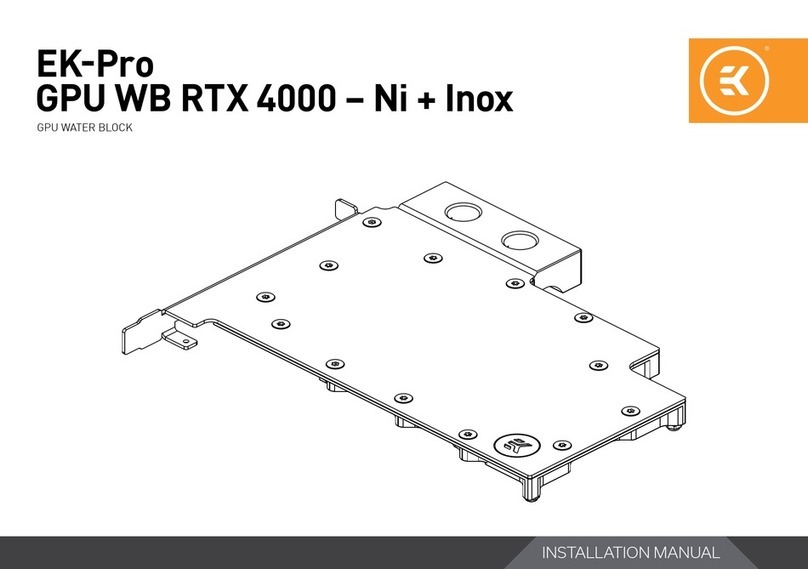
ekwb
ekwb EK-Pro GPU WB RTX 4000 - Ni + Inox installation manual
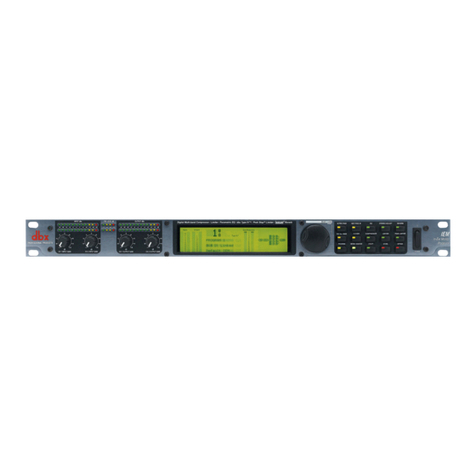
dbx
dbx IEM Specifications
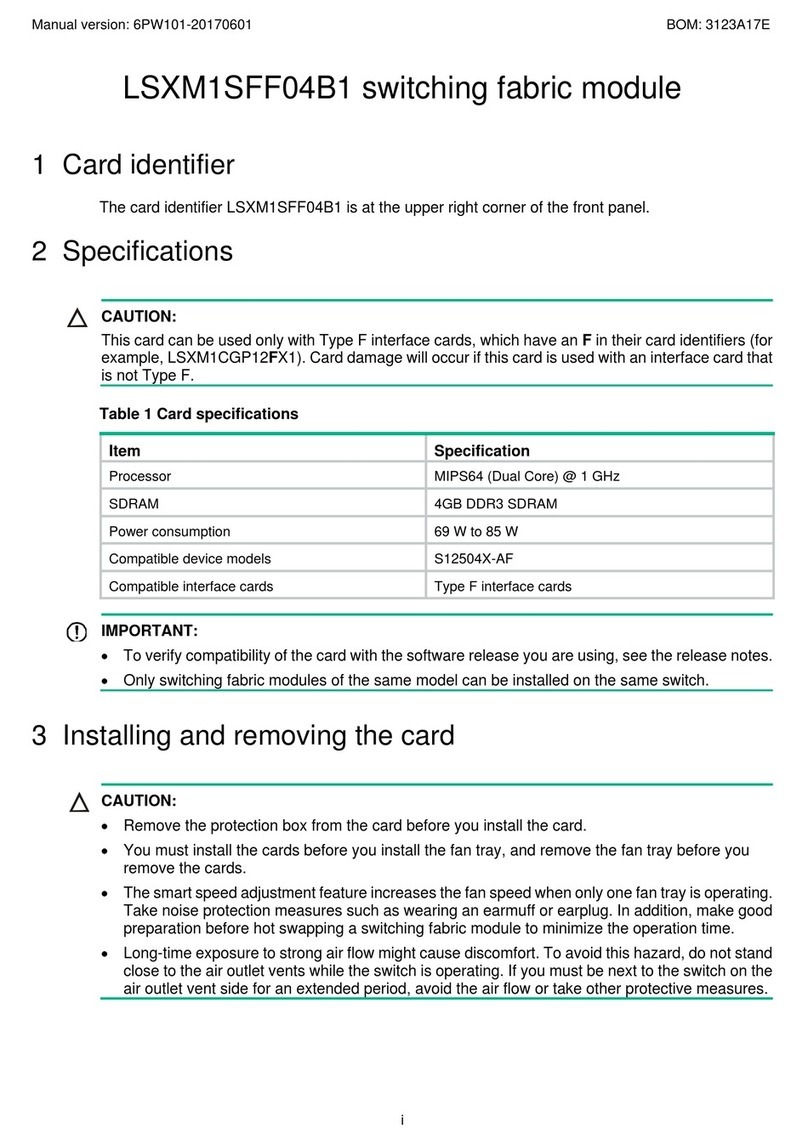
New H3C Technologies
New H3C Technologies LSXM1SFF04B1 quick start guide
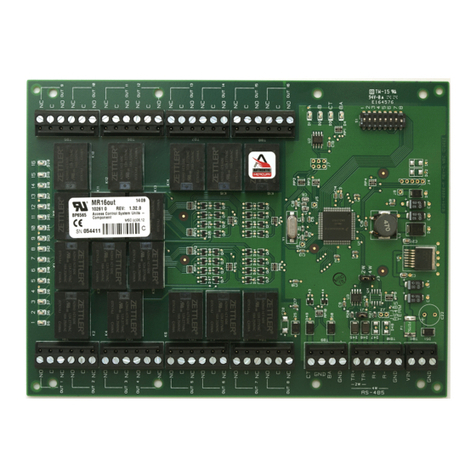
Mercury Security
Mercury Security MR16out Installations and specifications

WIN Enterprises
WIN Enterprises MB-63020 user manual
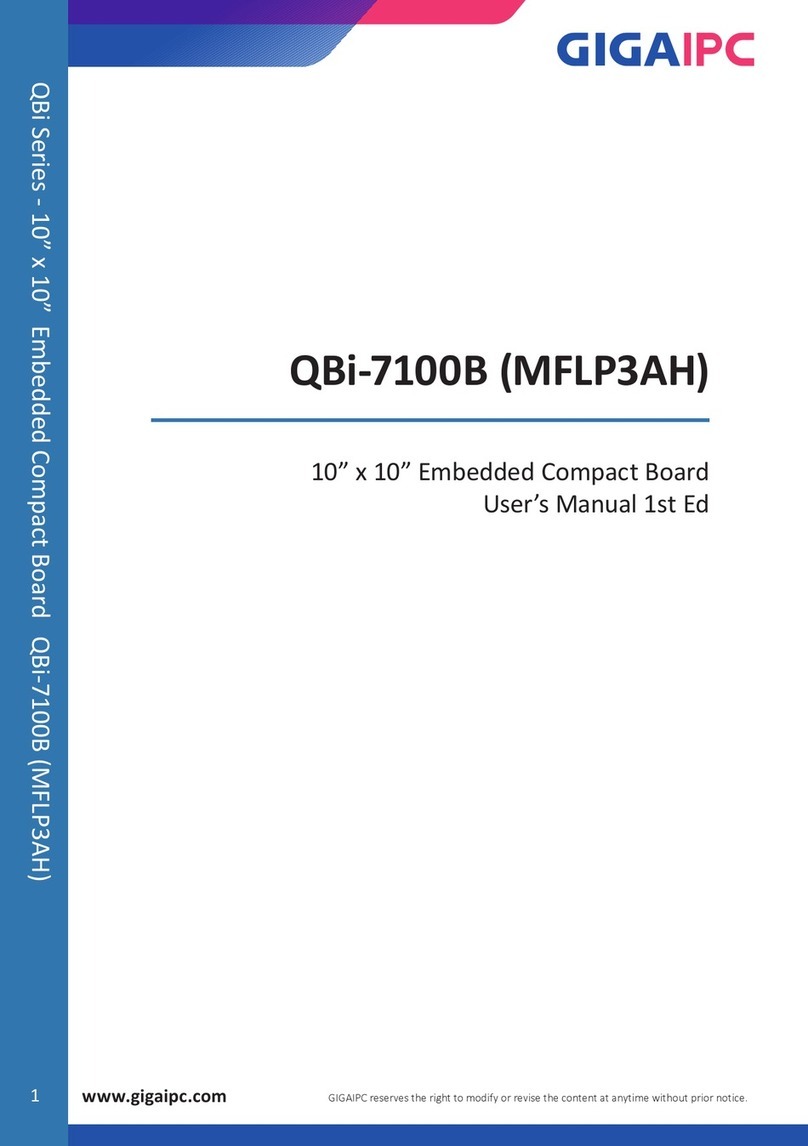
GIGAIPC
GIGAIPC MFLP3AH user manual

